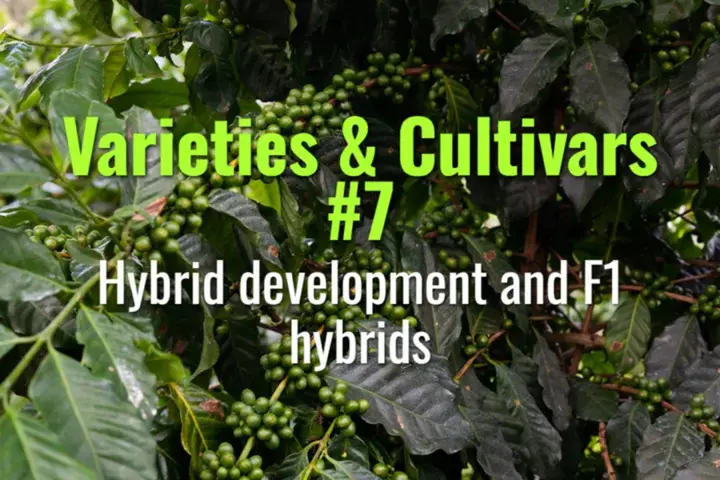Hybrid development and F1 hybrids
This topic explains how coffee hybrids are developed, the role of F1 hybrids in combining resilience and quality, and their significance for the future of global coffee cultivation.
- Coffee Basics Nerds
- 2 min read
Article 7 of 12 in Varieties & Cultivars/

Hybrid Development in Coffee
- Definition: Hybrids are crosses between two genetically distinct parent plants, aiming to combine desirable traits.
- Motivation: Increase yield, disease resistance, and adaptability while preserving good cup quality.
- Methods:
- Cross-pollination between selected Arabica lines.
- Incorporation of genes from Robusta (via Timor Hybrid) for resistance.
- Controlled breeding in research stations.
F1 Hybrids Explained
- Definition: First-generation hybrids (Filial 1), produced by crossing two genetically stable parents.
- Advantages:
- Hybrid vigor (heterosis): Enhanced growth, higher yield, improved resilience.
- Greater uniformity in plant performance.
- Early production compared to traditional varieties.
- Limitations:
- Seeds cannot be reliably replanted by farmers—second generation (F2) loses uniformity.
- Requires specialized nurseries to produce seedlings.
Examples of F1 Hybrids
- Centroamericano (Sarchimor × Rume Sudan): High yield, excellent cup quality, rust resistant.
- Starmaya: First Arabica F1 hybrid propagated by seed (developed in Nicaragua). Combines good quality with scalability.
- H1 (Sarchimor × Ethiopian landrace): Strong disease resistance and productivity.
Benefits for Farmers
- Higher yields under climate stress.
- Reduced chemical inputs (fungicides, pesticides).
- Potential for premium pricing if cup quality is maintained.
Challenges
- High cost of seedlings and limited access.
- Dependence on certified nurseries rather than farmer-saved seeds.
- Acceptance among specialty buyers varies; some skeptical about flavor consistency.
Agricultural and Market Significance
- F1 hybrids represent a new wave of coffee breeding innovation, balancing resilience and specialty potential.
- They are central to strategies for adapting coffee to climate change.
- Farmers adopting F1 hybrids can achieve stability and sustainability if supported by infrastructure and markets.
Lasting Importance
Hybrid development, particularly F1 hybrids, showcases how genetics and breeding are shaping the future of coffee. They bridge the gap between heritage quality and modern resilience, offering hope for sustainable production in a changing world.